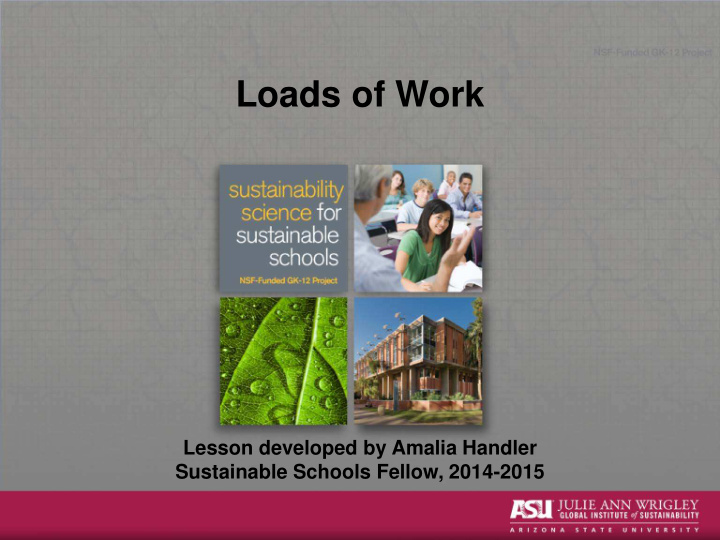



Loads of Work Lesson developed by Amalia Handler Sustainable Schools Fellow, 2014-2015
Part 1 What is this photograph depicting? What are some interesting features of the photograph? What type of ecosystem is shown in this photograph?
Part 2 What features of the riparian zone make it different from the surrounding environment? Why do the differences listed above occur?
Activity Roles: Plants 1. Your objective is to collect "load" from the water players. 2. You must pick one place to stand and remain rooted there. You cannot move your feet, but you can bend and lean and reach with your arms. 3. Collect as much “load” as you can from water players and from the ground. Remember that you are rooted to one spot and cannot move around. Soil 1. Your objective is to collect "load" from the water players. 2. Because "soil" is everywhere, you are free to walk or run all around the riparian area. 3. Collect as much “load” as you can from water players and from the ground. Hold as much load as you can. Water 1. Your objective is to carry your bag through the riparian area without losing any of your "load." 2. If a "load" falls on the ground, you must leave it there. If you are tagged by "soil" or "plant," you must give a "load" to that player . 3.
Activity Follow-Up Questions: Pick one of the following scenarios with you partner and describe how the ability of the riparian zone to hold a water’s load will be affected. Consider whether the amount of load held by the riparian zone will increase or decrease and why. A. A storm causes a big flood with 10 times more water flowing through the riparian zone. B. A fire burns the vegetation in the riparian zone. C. A developer cuts all the vegetation and builds a new waterfront apartment building. D. Cattle grazing along the river trample the riparian vegetation. E. A waste water treatment plant begins discharging waste water to the riparian zone. F. Drought causes the river to run dry.
Recommend
More recommend